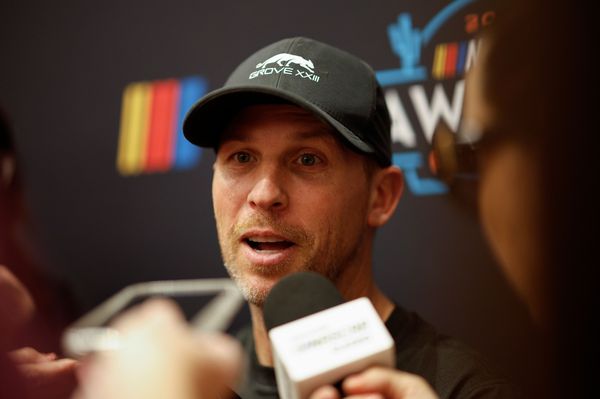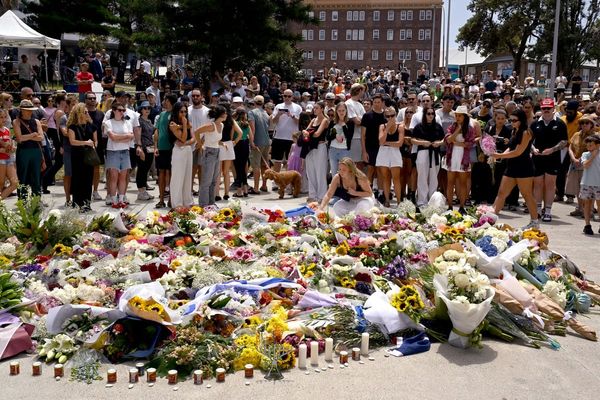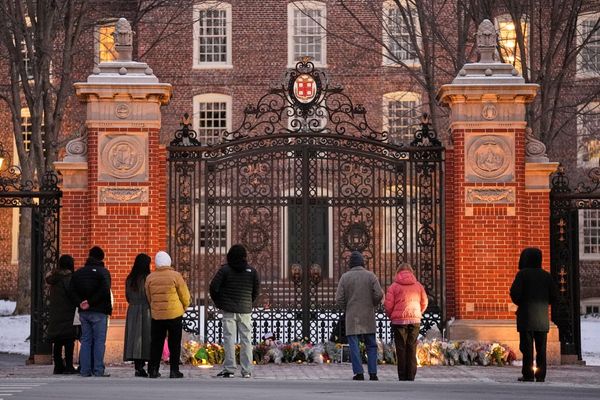
Donald Locke looked at all the formal aesthetic experimentation of the 1950s and 60s, all the minimalism and modernism and abstract expressionism, and thought: “Hold on. There’s something missing here. Something big.” The three grim, heavy, black monochromatic paintings that greet you as you walk into this show, called Resistant Forms, at Spike Island, the first major retrospective of the Guyanese-British artist’s work in the UK, have all the hallmarks of minimalism. They are dark, simple, ultra-formal images, a single colour on each canvas, covered in geometric grids, like Bauhaus in mourning. But the shapes and grids that define each work are not just experiments in form, they are not just an artist trying to push aesthetic boundaries: each is based on the architecture of the plantation.
Suddenly, this formal minimalism becomes heavily weighed down by history, exploitation and oppression. Now, those formal geometric structures look like fields of sugar cane, bodies packed too close together in cramped dorms, sweaty and suffering. Fur peeks out of a metal grate cut into one of the canvases, as if countless animals are pressed in there, caged. They are incredible, powerful, uncomfortable, shocking paintings.
Amazingly, Locke, who died in 2010, at first rejected any political reading of the works, insisting they were just exercises in form. It wasn’t until years later that he realised how overburdened with the pain of colonialism the works really were.
Taking the language of art and imbuing it with the reality of the colonial experience is a move that Locke would repeat over and over. In the 1960s, he came to Bath and Edinburgh to study ceramics. The black sculptures that resulted are like splayed bodies, pairs of lungs spread apart, muscles locked in tension. In the 70s, the ceramic shapes elongate – now they look like long, downtrodden, browbeaten, solemn figures arranged into grids and locked in cages in sculptures titled Plantation K-140 and Plantation Piece. The brutality of the plantation as a tool of colonial greed, control and subjugation is everywhere.
The most famous piece here, Trophies of Empire from the Tate’s collection, is a series of long black cylinders placed in vases and cups, some shackled together, others encased in silver, all displayed in a bleak wunderkammer of colonial violence. He was pretty insistent that these cylinders were bullets, not penises, but either way the result is the same: the colonies get screwed while the colonisers get rich.
The mixing of media – in that case, ceramics and found objects – would happen throughout the rest of his career. Later paintings, from when he had moved to Arizona and then Atlanta, combine vast abysses of black paint with photos of confederate soldiers, skulls, Queen Victoria, white nudes and black singers. There are even photos of his own old work. Throughout, the past loops inescapably back into the present.
He was a maximalist, smashing together painting and ceramics, modernism and African-Caribbean mythology, sculpture and photography, ideas upon ideas upon ideas. Some of the ceramic works get a little dull and repetitive, and the later reinterpretation of Trophies of Empire isn’t great. But the canvases are highly successful, powerfully dark, ultra-critical, vast, angry things.
Locke was at the forefront of a disparate group of diasporic artists dragging modern art into the post-colonial future. Alongside people including Frank Bowling and Aubrey Williams, Locke used his work to say: “Hey, you can’t separate art from history, from context.” Painting and sculpture in the post-colonial era is haunted, stalked by colonialism. To ignore that is to ignore the truth. He could no more make art unaffected by those things than he could ignore his own race, his own family history, his own past.
The most striking thing is how current the work looks. Decades before colonialism, blackness and post-colonial rhetoric became one of the dominant themes of contemporary art, Locke was laying out a roadmap for how art could confront uncomfortable histories and create something beautiful in the process.
• Donald Locke: Resistant Forms is at Spike Island, Bristol, 31 May to 7 September; Ikon Gallery, Birmingham, 1 October to 22 February 2026; Camden Art Centre, London, 3 April to 6 September 2026.







